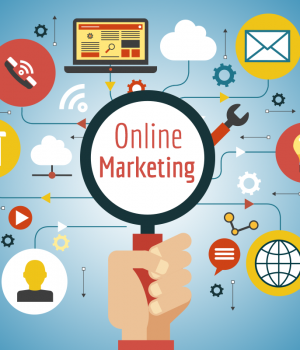
Small businesses often don’t have much budget or time to spend on marketing, but there are many free and inexpensive tools that you can utilise to help market your business. For instance – fully harnessing the power of the internet.
Today the digital world provides many influential online marketing tools that can help your business be visible to more potential customers.
Here are five simple tips you can implement to help ramp up your online marketing and get the most out of your efforts.
1. Domain Name
Today, a key component of your marketing strategy will be how to promote your business in the digital world. While creating a website might seem like the obvious first step when establishing your online presence with, the first step is actually choosing a domain name that best describes your small business. Your domain name can become a unifying element throughout your marketing. Just as your company name is crucial, the domain name for your website is that all important first impression to the online world.
A domain name represents your brand online and can convey critical information to potential visitors who may be deciding whether or not to click through to your site, driving crucial search traffic. As well as portraying your brand, your domain can inform your audience about the content they can expect (eg adding .news) or where your organisation is based (eg. adding .Sydney or .Melbourne).
When approaching your domain name it’s important to remain consistent; many businesses use the same name for their domain and business email address to streamline communications and communicate to customers using a professional identity. It’s also an opportunity for you to be creative and express your brand’s personality.
This could be through using the last word of the name as the extension rather than the entire business name before a .com extension or adding a touch of humour to appeal to customers of a similar mind. Be sure to think long term when you’re choosing a domain name and pick one that will be relevant for the lifetime of your brand, not one that’s just trending now.
2. Content
Once you have your chosen domain it’s time to draft the content for your site. Your website should serve as an information hub for your customers; featuring relevant content and a clear, concise message that supports your marketing. Think about the kind of information your customers would be looking to find when they come to your website; support and advice, location and contact details. You’re the expert in your field, so share your knowledge with those who value it. The key to good content is knowing who your audience is and communicating with them directly. It’s important to understand what attracts and interests your customers in order keep them coming back to your pages.
Great content deserves to be seen, so it’s important to ensure your website ranks highly in search engines, like Google, using basic SEO. You can master SEO by ensuring you have a relevant title tag. To put it simply, think about what your customers will type into their search engine if they’re looking for a product or service like yours and include these same search terms throughout your website, website tags and your website’s URL itself.
3. Social Media
Linking your Facebook, LinkedIn, Instagram, Twitter and other social media platforms to your website and vice versa creates a chance to build a concrete brand and engage with your customers, and when fully integrated can represent an important element in your overall marketing strategy. Your website and social platforms is where you can express the essence of your brand with the world.
Images can enhance posts and grab readers’ attention quicker. Your social posts need to be compelling enough that they only have to be looked at for a few seconds until the reader takes action. Ensure you’re regularly posting and interacting on your businesses social platforms for continual brand exposure which your audience will notice, prompting them to get in touch and learn more about you and your business, and visit your website often.
4. Email Marketing
Sending newsletters directly to your customers’ inbox is one thing, but to get them to open your email is sometimes the tricky part. Be witty and concise with your subject line, 33% of email recipients decide whether or not to open an email based on subject line alone (HubSpot, 2016), which means you only have a few words to convince your customer to click on your email. Once they have clicked your email, ensure your content is just as enticing as its heading. Keep your content short and sweet, and consistent with your marketing messages.
Keep in mind that 40% of emails will be opened on a mobile device first, so you will want to help ensure the content included in your email is optimized for mobile device viewing. Contests, sales, coupons and freebies can encourage your audience to take action and increase their engagements across other platforms, like social media.
You can help speed up the process of building your brand, by utilising the free and inexpensive online marketing tools available to you. The internet has the power to help bring potential customers to your business, so use it to your advantage as a key part of your ongoing marketingstrategy to help showcase and grow your business online.
Tara Commerford is the Managing Director, GoDaddy Australia & New Zealand

[“Source-anthillonline”]
